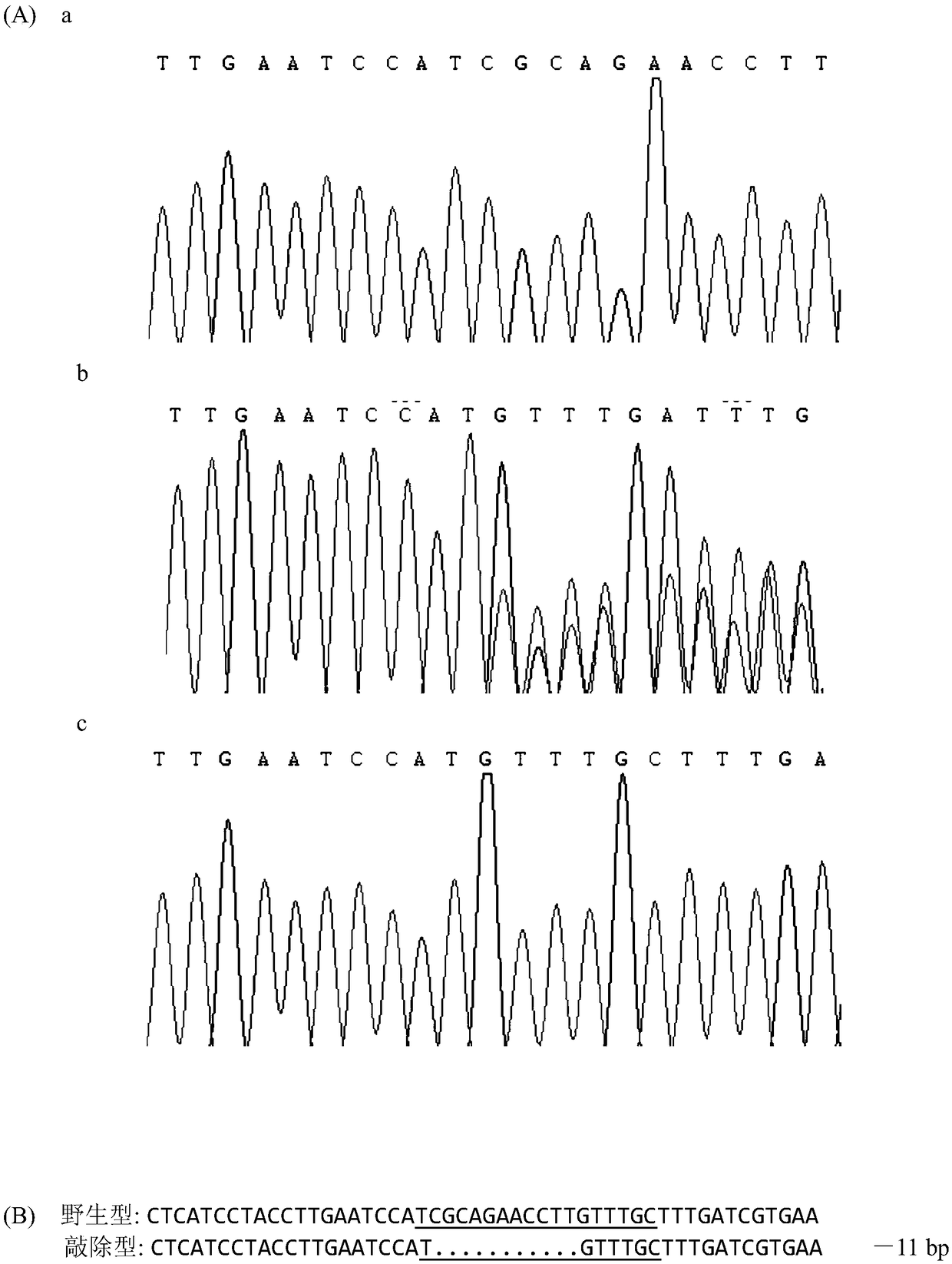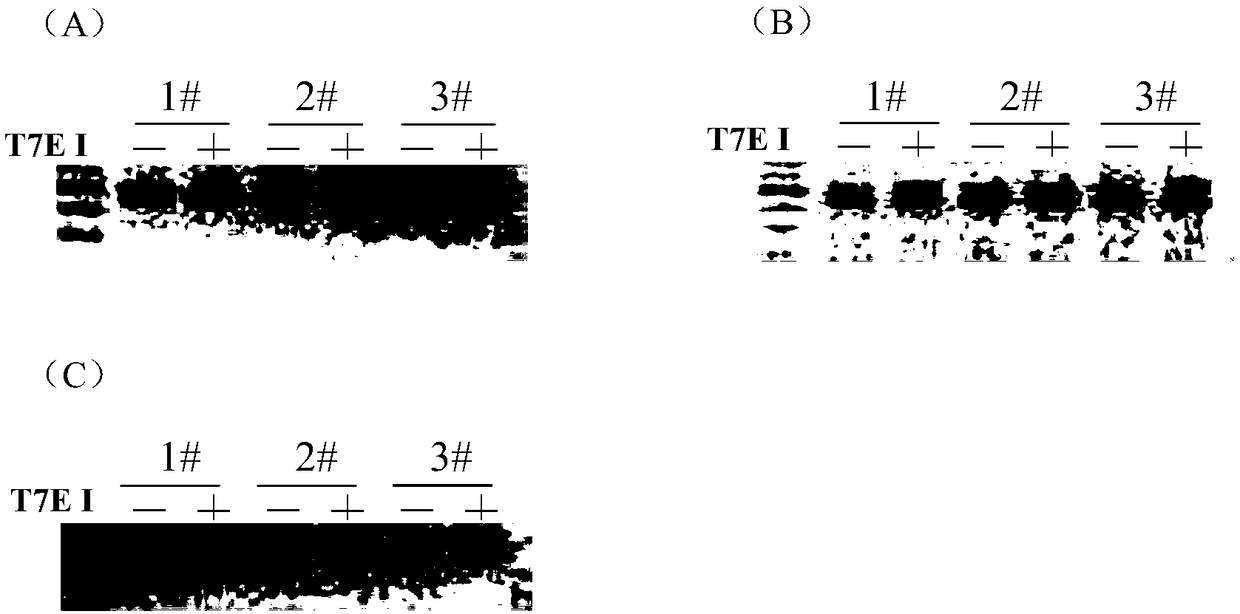Construction method of Slco1b2 gene knockout rat and application thereof
A technology of gene knockout and construction method, which is applied in the field of biomedicine and can solve the problems of high cost, long experiment cycle, and difficulty in obtaining
- Summary
- Abstract
- Description
- Claims
- Application Information
AI Technical Summary
Problems solved by technology
Method used
Image
Examples
Embodiment 1
[0067] Example 1 Selection of Slco1b2 Knockout Target
[0068] First, the rat (Rattus norvegicus (Norway rat)) Slco1b2 gene sequence was searched through the NCBI database, and then the start codon and stop codon were found in the gene sequence, and the exon regions were marked in sequence. In order to completely knock out the target gene, the selected target of the present invention is at the first exon of the rat Slco1b2 gene, and the first exon sequence of the Slco1b2 gene is input into the online target prediction website https: http: / / benchling.com, get the target sequence shown in SEQ ID NO.1 with a length of 18bp.
[0069] And because the CRISPR / Cas9 gene knockout system recognizes the DNA sequence ending in NGG (PAM site) corresponding to its gRNA in the genome, a 21bp sequence is obtained, including 18bp of the target site and 3bp of the PAM site.
[0070] The online target prediction website selected by the present invention is: https: / / benchling.com.
[0071] The ...
Embodiment 2
[0072] Example 2 In vitro sgRNA template synthesis and transcription
[0073] The sgRNA template is a 60 bp Oligo fragment comprising the T7 promoter sequence and the 18 bp target sequence obtained in Example 1. After the fragment is synthesized in vitro, use it as a template to synthesize a complete sgRNA double-stranded template by overlapping PCR reaction, extract and separate the double-stranded template, and then use the T7 in vitro transcription kit to transcribe the sgRNA double-stranded template in vitro. The product was extracted and separated to obtain the sgRNA of the Slco1b2 gene.
[0074] Among them, the 60bp Oligo fragment sequence containing the Slco1b2 gene knockout target is:
[0075] 5’-GATCACTAATACGACTCACTATAGG GCAAACAAGGTTCTGCGA GTTTTAGAGCTAGAAAT-3' (SEQ ID NO. 2). The underlined area is the target sequence (SEQ ID NO.1).
Embodiment 3
[0076] Embodiment 3 embryo microinjection
[0077] Firstly, pseudopregnant female rats are prepared, and healthy adult male rats (over 8 weeks old) are sterilized, and then placed in cages with healthy adult female rats (over 8 weeks old). The female rats with vaginal plugs were successfully mated and were the pseudopregnant female rats required for subsequent experiments.
[0078] Then superovulate the normal adult female mice, put the female mice in a cage with normal male mice, and make them mate and conceive normally. The mated female mice were sacrificed, fertilized eggs were taken out, and the fertilized eggs were kept in vitro at 37°C CO 2 Incubate with embryo medium for 2 hours in the incubator.
[0079] Using the microinjection technique, the sgRNA of the Slco1b2 gene obtained in Example 2 and the Cas9 mRNA were co-injected into the fertilized egg cytoplasm. Wherein, the sgRNA injection concentration is 25ng / ml, and the Cas9 mRNA injection concentration is 50ng / ml....
PUM
 Login to View More
Login to View More Abstract
Description
Claims
Application Information
 Login to View More
Login to View More - R&D
- Intellectual Property
- Life Sciences
- Materials
- Tech Scout
- Unparalleled Data Quality
- Higher Quality Content
- 60% Fewer Hallucinations
Browse by: Latest US Patents, China's latest patents, Technical Efficacy Thesaurus, Application Domain, Technology Topic, Popular Technical Reports.
© 2025 PatSnap. All rights reserved.Legal|Privacy policy|Modern Slavery Act Transparency Statement|Sitemap|About US| Contact US: help@patsnap.com



